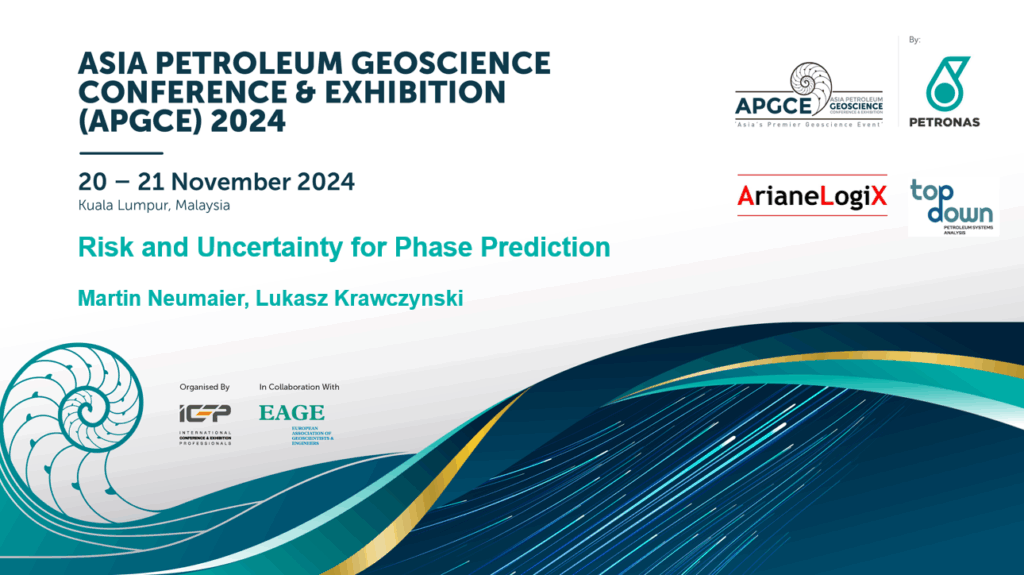APGCE Conference, Kuala Lumpur, 2024
Martin Neumaier – ArianeLogiX
Lukasz Krawczynski – Top Down Petroleum Systems
Abstract
Traps containing both oil and gas, or dual phase accumulations, are very frequent in many hydrocarbon provinces, especially in Southeast Asia. Those mixed prospects are generally poorly treated in prospect assessment, and the possible presence of gas, competing with oil for pore space and seal capacity, complicates exploration in many areas.
Generally, Petroleum systems modelling (PSM) is used for phase and compositional predictions. However, valuable learnings and results from PSM are not necessarily well integrated into prospect assessment and decision making. Figure 1 shows the simulated phase, volume and composition for a prospect. PSM is widely used for the testing and quantification of geological scenarios with respect to hydrocarbon charge, its timing and composition. However, it also presents limitations when it comes to the prediction of the retained phase (oil or gas or both), volumes and the associated column heights. This is due to intrinsic issues such as input data resolution and model grid size, but also because of the deterministic nature of the modeling while using parameters which are highly uncertain.
On the other side, prospect assessment is highly probabilistic, covering a large range of possible outcomes using Monte Carlo simulations. Standard prospect assessments however do not receive any quantitative input from PSM. In most cases, qualitative recommendations such as “high risk for gas” or “small column heights are not excluded” are given, based on a suite of deterministic models.
We present a workflow where PSM and prospect assessment are combined in a quantitative way, bridging the gap between deterministic physics-based simulation and usually oversimplified probabilistic calculations.
